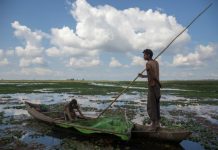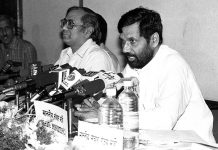On 28th June, the NSCN(IM) one of the major Naga armed separatist group based in North Eastern region of India released an official statement proclaiming that it is their inherent right to collect taxes from the population and commercial establishments in Naga inhabitant areas. It’s the counter response to Nagaland Governor RN Ravi’s hard hitting letter to Chief Minister Neiphiu Rio which somehow got leaked (Ambrocia, 2020). The letter states about the deteriorating law and order situation in the state by describing armed Naga groups as extortionist gangs. The NSCN(IM) response is a clear assertion of the outfit’s political legitimacy and it comes at a backdrop of many other recent instances of clash of interest that is shaking the already fragile ceasefire agreement signed between them and Government of India.
Likewise, two months back five hardcore ULFA(I) cadres were apprehended in Charaideo district of Upper Assam. They were on major recruitment drive in the area. These are the few among many recent developments regarding the insurgency environment in this region that is an issue of grave concern. Considering the contemporary situation in which the country is fighting a global pandemic, a shattered economy and on top of that China’s hostile expansionist approach, such development is indicating towards probable chance for the upsurge of insurgent activities in the region in the near future.
The North eastern region of India, also referred to as Balkans of India as it is home to various ethnicities and have witness protracted conflict since its inception into India. Various separatist groups based on ethno-nationalist aspirations are waging an armed insurgency against the Indian state from more then six decades. Among them Naga insurgency is considered to be the oldest ongoing insurgency in the world.
As Sidney Tarrow, pointed out in his work, the escalatory process in insurgencies are dependent upon numerous factors, among which significant ones are political motivation, popular support, availability of weapons and external support (Tarrow, 2007).So there is a possibility that the contemporary situation will act as catalyst in enhancing these above factors in the region.
Firstly, COVID -19 pandemic already had a drastic impact on our country’s economy, which will trigger a serious livelihood crisis in the near future. Moreover, it will also cause severe implication on the socio- economic structure of the society living in this region. As Chinese communist revolutionary Mao Zedong said, the potential for mobilizing for a revolution would exist in a country where existing Governmental structures fail to fulfill the basic obligations of providing its citizens with the minimum standard of living (Tung, 1996). Hence it will boost the political motivation and popular support base for insurgent groups by attracting unemployed and disillusioned youth into their folds, as it is seen as provider of alternative livelihood opportunities.
Secondly, North East India being a region which is often marginalised in mainstream politics and has cultural ties spreading across international borders. It shares an international border with countries like China, Myanmar, Bangladesh and Bhutan. The vast porous borders along with geographical and demographic complex terrain makes it favorable condition for armed insurgent groups in terms of availability of weapon and to operate as they rely on guerrilla tactics.
Thirdly and most importantly, external support is considered to be the most vital for sustenance of any insurgency movement. This support could be in the form of military, economic and political. In the case of North East India, its neighboring countries have been considered as safe haven for region’s various armed groups, where most of their training camps are based. Over the time some of these groups have fostered a good network with various other powerful actors of those countries.
In this context, historically China has played a strong role by covertly supporting various armed groups of this troubled region which is the aspect to be most worried about in the contemporary situation. It has provided crucial support in the form of logistics, arms through illegal market to majority of the armed organizations since their inception. Many of these groups are ideologically based on Mao’s concept of people’s war and several of their leading founding leaders were trained by People Liberation Army (PLA) of China. Paresh Baruah, ULFA (I) Chief and one of India’s most wanted man is currently believed to be in China’s Southwestern province of Yunnan safeguarded by Chinese intelligence (Bhattacharyya, 2020). These non state actors are strategically used by China in achieving its geo political interest in the region. Tactically, China’s attempt is always to make this region volatile to counter India’s expansionist policies and economic interest in the Indo-pacific region i.e. the Act East Policy. So looking at China’s aggressive expansionist approach, considering their long territorial claim over various parts of Arunachal Pradesh, there is a probability of them setting a stage for proxy war against India using the regions insurgent groups.
Taking consideration of all these aspects, the best way forward for India is to frame a solid response in the form of a policy towards solving the issue of insurgency at earliest.
This issues needs to be dealt with maturity, sensitivity and responsibility. There is a need to engage in dialogue and negotiations with the prominent and bigger armed groups of the region. This process should be done in a holistic manner to attain a concrete solution and to solve this multi- decade old issue of insurgency in the region.
Anurag Das is a Freelance Writer based in Guwahati, Assam.














